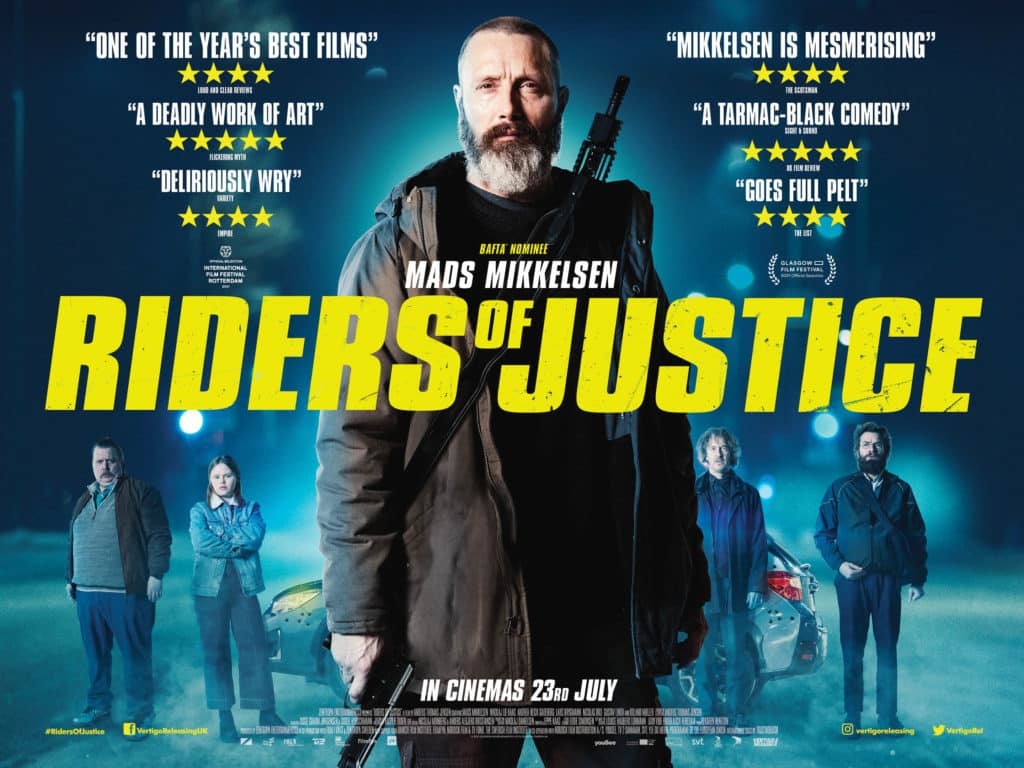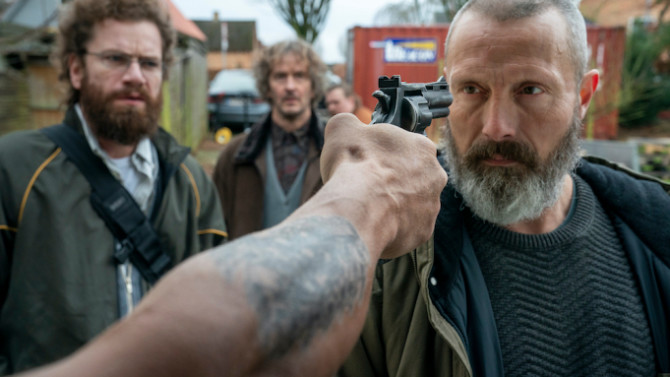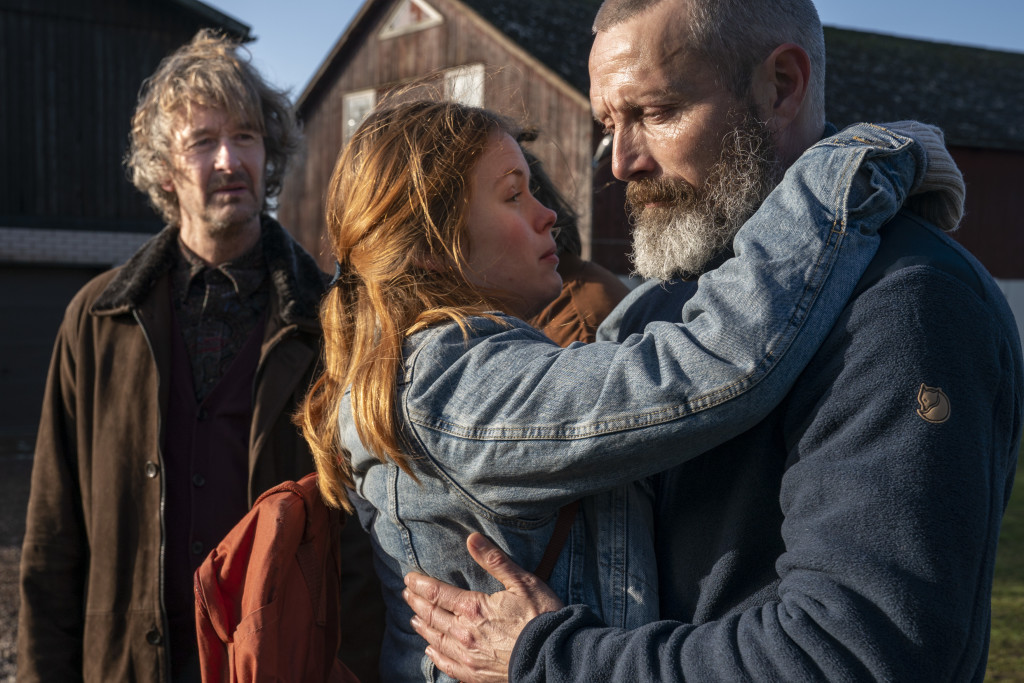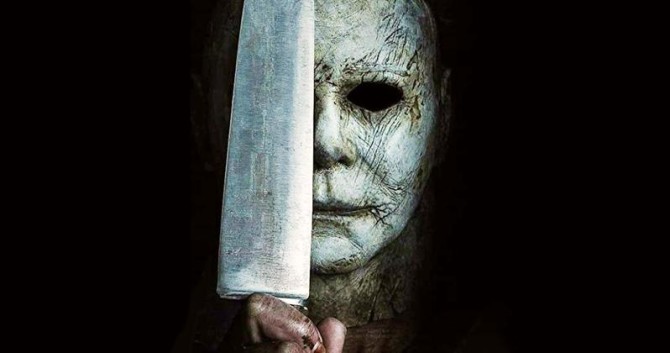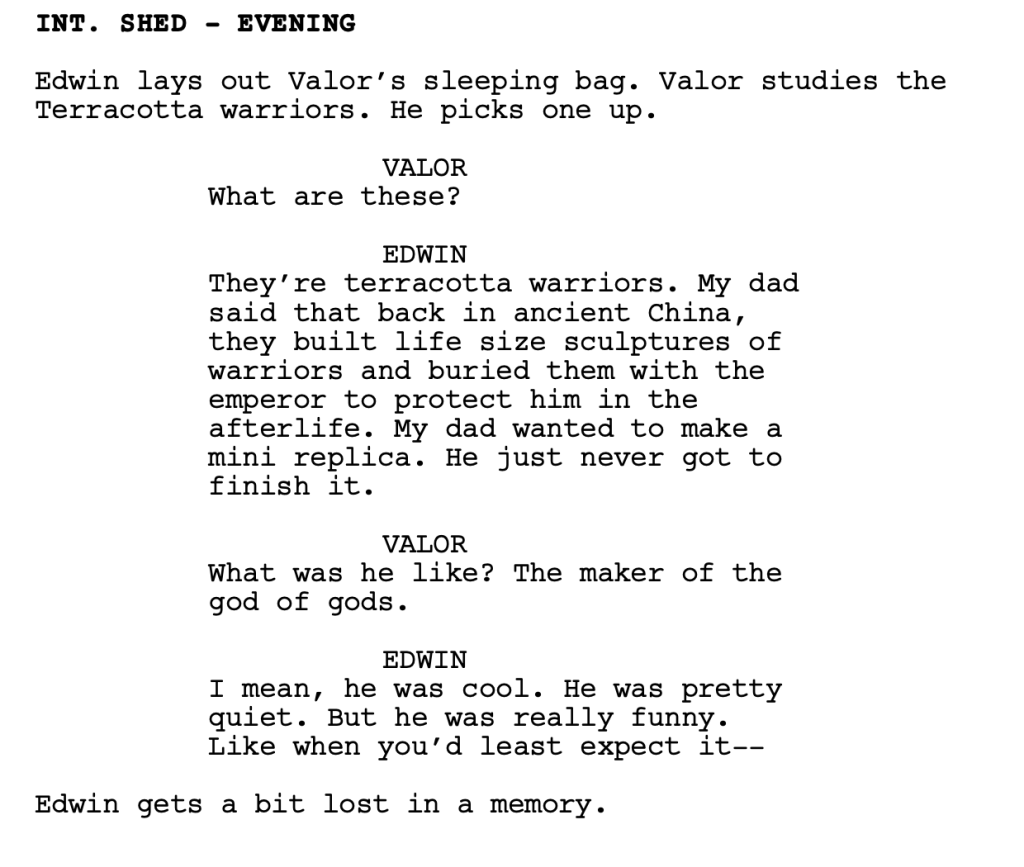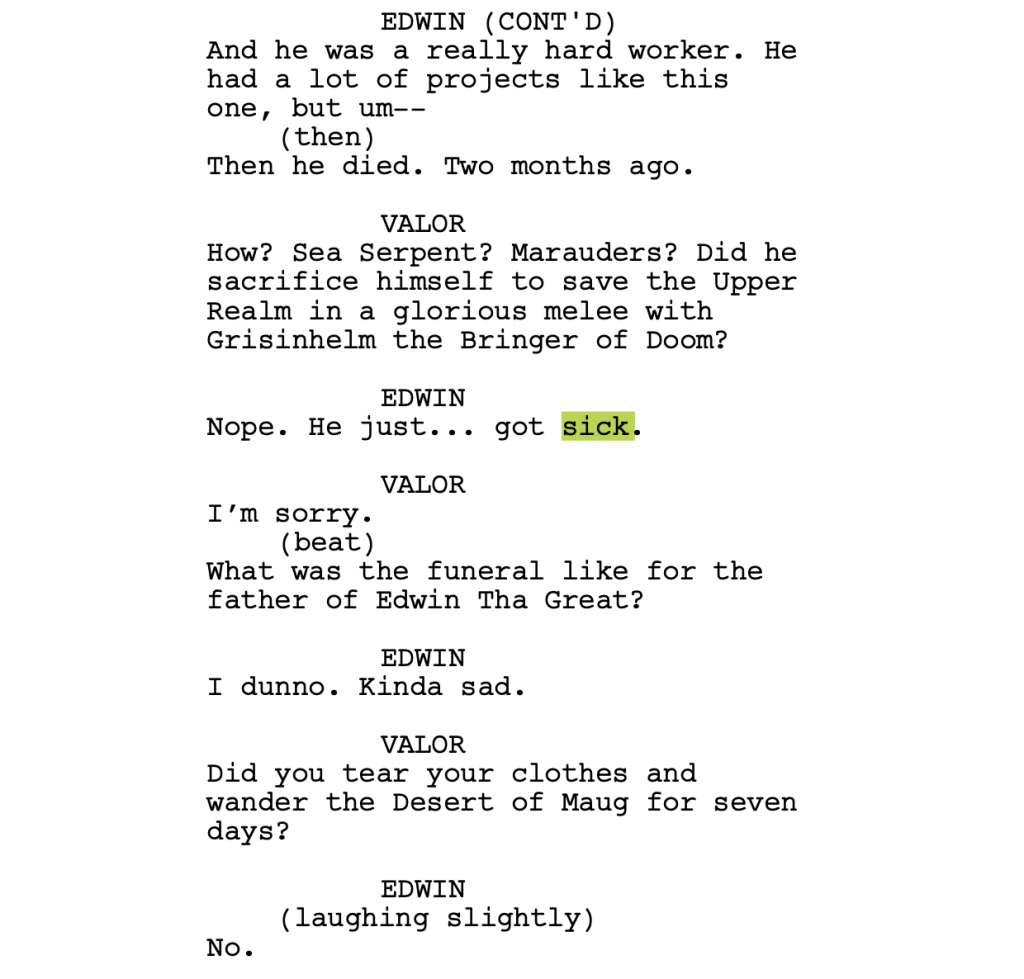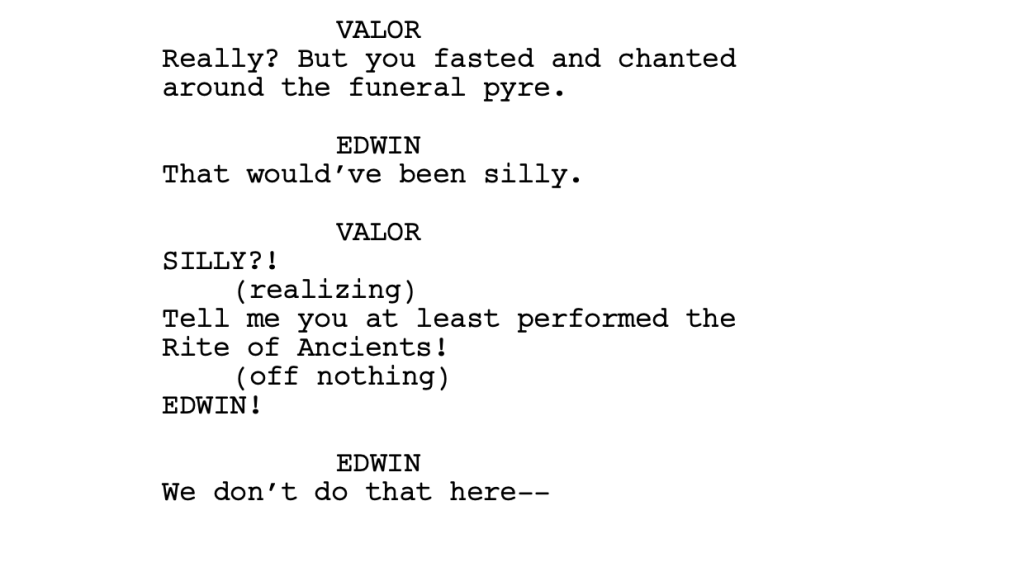Search Results for: the wall
Genre: True Story/Thriller/Crime
Premise: (from Black List) The incredible true story of the multi-billion dollar Malaysian government corruption scandal which led to the conviction of Prime Minister Najib Razak and almost $5 billion in settlements paid out by Goldman Sachs.
About: This script finished with 10 votes on last year’s Black List. I’ll let Deadline give you some insight: “From her kitchen table, Brown revealed the illegal activity that not only went to fund the lavish, Gatsby-like lifestyle of Jho Low, the young, wildly ambitious Malaysian national of Chinese descent who masterminded the plot — and who is still at large — but also the Malaysian prime minister, his wife, their nine-figure cache of jewels, real estate, clothes, and designer handbags, a $1 billion political slush fund, and even the Oscar-nominated Martin Scorsese-directed The Wolf of Wall Street, which starred Leonardo DiCaprio as Jordan Belfort. Along the way, Goldman Sachs – whose most senior executives in the region were found to be complicit – would be forced to pay over $5 billion in settlements to the US and Malaysian authorities.”
Writer: Scott Conroy
Details: 126 pages
Readability: Medium
Money-money-money-monaaay……. MONNNAAAAY.
Hollywood loves themselves a story about money. About excess. Greed. They absolutely LOVE IT. If you can find a true story with even halfway decent characters that exposes some billion dollar scam or grift, WRITE IT. It’s money in the bank. Your bank this time.
This one is a little hard to summarize but I’m going to give it my best shot. There’s this English blogger named Clare Rewcastle-Brown who grew up in Malaysia and now has a blog that nobody reads exposing their government’s corruption.
Clare soon stumbles upon a Malaysian man named Jho Low who is a board member for a Malaysian financial fund called 1MDB. This is a government fund that has indirect ties to the prime minister, Najib Razak. Jho Low really likes to invest in things using this fund. For example, he invests in an oil company in Saudi Arabia. And a movie production house in Hollywood (the one that produced The Wolf of Wall Street).
Jho Low loves to spend money. At one point, we see him blow 3.6 million dollars on a single blackjack hand. Oh, and he spends 42 million dollars on the original Metropolis movie poster, which he frames and puts in the lobby of his production house! Just hanging out. 42 million bucks there for the taking.
Clare starts writing about this guy and, naturally, the Malaysian government gets upset so they start threatening her, putting unflattering pictures of her online, even getting people to follow her around.
Clare eventually gets contacted by a banker who used to work with Jho and has over 30,000 e-mails from him that expose his crazy spending. Clare is too scared to publish them so she goes to the Wall Street Journal instead and they run the story. All in all, Jho Low spent something like 6 billion dollars. This results in mass chaos in Malaysia and Najib Razak is voted out of office at the next election. The end.
Let’s talk about exposition, shall we.
Actually, let’s talk about all three screenwriting villains: Exposition, setup, and backstory.
These three script malcontents are your mortal enemy. Their purpose, while noble, gets in the way of you being able to do what you want to do, which is tell a story.
I just watched this little sleeper film on Netflix called The Clovehitch Killer. It’s a good movie about a teenager in a religious family who suspects that his father may be a serial killer. You should check it out. What stood out to me about that movie was just how little exposition, setup, and backstory it had. It was pretty much straight storytelling. You didn’t have to trek through any mud to get to the beach.
1MDB, much like yesterday’s Foundation, is jam packed with exposition, setup and backstory. If we’re not meeting the fifteenth member of some rare Malaysian bank, we’re meeting the twentieth fellow billionaire buddy of Jho Low.
I’m going to try and make an analogy here so stay with me. Whenever you buy a board game, it comes with a rule book. Or, at least, it used to. I don’t know what they do now. Maybe some hologram lady explains the rules to you. But if you’ve ever played a board game, you know that nobody wants to sit around and read a long rule book in order to play the game. They just want to play. Which is why most board game rule books are short and simple. The creators of these games know that there’s a tipping point whereby if the extensiveness of the rules outweighs the fun of the game, people just won’t play.
As a screenwriter, you want to think about your potential script in the same way. It comes with a rulebook. That rulebook consists of exposition, setup, and backstory. The thicker that rulebook is, the more challenging it will be to write an entertaining story. And if you have a rulebook as thick as 1MDB’s, it’s almost impossible.
1MDB started out strong because it focused on these things that we were familiar with – glitzy Hollywood stars winning Oscars and partying with rich financier producers. But the second we have to start explaining what 1MDB is, the script becomes more of a documentary than a narrative feature.
I mean I still don’t know how Jho Low is connected to the prime minister, which I thought was the whole point. And here’s where the evils of excess exposition rear their ugly head. The answer may very well be in the script. The writer might be able to tell me the exact page number where they explain how Jho Low is connected to the prime minister. But, you see, human readers aren’t computers. We don’t automatically download everything that’s on the page. When a lot of information comes at us, we’re overwhelmed. You might be explaining something clearly to us but we’re still trying to process the last three pages of dense information we read and, therefore, we’re not present enough to understand the latest information you’re sending our way.
This hurts the script in a myriad of ways, one of which is essential for making these types of stories work. The big financial greed stories need a villain. They need someone – or at least some identifiable entity – we’re infuriated by so we can root for them to get caught. Like the Catholic Church in Spotlight. They were so evil in that story, I was infuriated, which made me want them to get caught. I think that person in 1MDB is supposed to be Jho Low but I never once saw him as an evil presence, explicitly because there was too much information to wade through to understand why he was bad.
I think – I *THINK* – that 1MDB was a government fund and, maybe, Jho Low was one of several people tabbed with investing that money to grow the fund for the Malaysian people? And so for every stupid purchase he made, he was deliberately taking money out of Malaysian peoples’ pockets? I *THINK* that was what was going on.
But, again, because there was so much information to wade through, I was never sure exactly how he was hurting the Malaysian people. So I couldn’t be that upset at him. And therefore I wasn’t that keen on him getting caught. And if I don’t care if your bad guy gets caught, you don’t have a movie.
You see, what Scot Conroy doesn’t realize here, is that the real problem isn’t the Malaysian government. It’s exposition. It’s a story that needed such a big rule book that by the time we were done reading it, we didn’t want to play anymore.
And hence, that is today’s lesson. When you’re contemplating whether to write a script or not, ask yourself how big the rule book needs to be in order to write the story. If it’s too big, think twice about writing the script. It’s not that it can’t be done. As I’ve said here before, you can make any story work. But if you’re not an experienced screenwriter with years upon years of practice on how to distill, hide, and eliminate exposition, you’re fighting an uphill battle. I mean David S. Goyer’s been in the business for 20+ years and even HE was having trouble deciding which information should stay and go in yesterday’s Foundation, leading to a clunky, unclear, pilot. You’d be much better off writing a simple story like The Clovehitch Killer. (P.S. It’s really good! Check it out!)
[ ] What the hell did I just read?
[x] wasn’t for me
[ ] worth the read
[ ] impressive
[ ] genius
What I learned: Outrage Narratives. It’s totally legit to write an outrage narrative (the main thrust of the narrative is that you’re so angry, you have to keep reading to see the bad guy go down). We see how effective outrage is by reading the daily news. However, for outrage narratives to work, you must clearly explain why we need to be so outraged at the villain. 1MDB didn’t do a very good job of that, which is why it landed with a whimper.
Genre: Slow-Burn Thriller/Period
Premise: Set in the 1930s when a giant dust cloud had settled over Oklahoma, a mentally unstable mother and her two children must survive both the dust and a mysterious person using the cover of the dust to infiltrate her home.
About: This script finished with 7 votes on the 2020 Black List. Karrie Crouse is relatively new on the scene. She wrote on HBO’s Westworld.
Writer: Karrie Crouse
Details: 105 pages
Readability: Slow/Clunky
One of my favorite horror movies is The Others. I absolutely love that movie. There was nothing spookier than that trio in that house, with the sick kids who couldn’t endure sunlight. I loved it. Which is why I chose this script. Cause it sounded like an update to that formula. Was it? Or was it dust in the wind?
Margaret Bellum and her family live in the Oklahoma Panhandle in the year 1933. They live in a farm house in the middle of nowhere and have been dealing with a never-ending dust drought that’s already killed one of their kids, who breathed too much dust.
Currently, Margaret is getting her kids, Rose (16) and Ollie (7) ready for their father’s extended absence. He’s got to go to work. Which means these three will be on their own. Well, unless you count the dust as a person, which it might as well be. It’s all anybody in the town talks about.
Speaking of the town, the rumor is that a creepy man has made his way into the area and is appearing inside peoples’ houses, sometimes stealing, other times killing. The assumption is that the dust has driven him crazy. Margaret isn’t convinced that the rumor is real. Although maybe she’s just telling herself that because the alternative is too terrifying to accept.
After the father leaves, Margaret becomes obsessed with all the little cracks in her house that are letting in dust. So she cuts up all her clothes to stitch up those cracks. And yet, the dust keeps getting in. Her obsession starts to worry her daughters, who are not down with a crazy mommy. But what can they do?
Margaret also starts thinking that someone is sneaking into the house at night and stealing things. Just when it seems like she’s imagining it, she catches the man in question, Wallace, a preacher who says he knows Margaret’s husband. Wallace somehow convinces Margaret that he’s good people. But she later receives a letter from her husband that says, “By the way, watch out for a psycho preacher.”
Margaret and her children are able to get rid of the Wallace problem. But now they’re back to square one – Margaret going crazy and all that darned dust! As we creep towards the climax, we get the sense that Margaret might do something drastic to herself and her children. Will the town step in before it happens? Or might the kids finally realize that, in order to survive, they’ll have to turn against their crazy mommy?
It’s appropriate that today’s script is titled, “Dust” because that’s what you feel like you’re looking through when you read it – layers and layers of dust. We talk so much on this site about character and plot and structure and dialogue. But we rarely talk about the words on the page and how they’re constructed to create an engaging reading experience.
The Oklahoma Panhandle circa 1930 is an interesting setting for a movie. A constant onslaught of dust makes for all sorts of unique challenges. Unfortunately, the script is plagued – at least early on – with a writing style that’s hard to follow. I’ll give you a few examples.
“A DINGY HALO OF DUST radiates out from a clean WHITE CIRCLE where Rose’s head blocked her pillow from dust.”
While I eventually understood the image this sentence describes, it goes about describing it in an inefficient and confusing manner. A “dingy” halo of dust. Isn’t that redundant? Isn’t all dust dingy? Or is dingy being used to add another layer of dirt? It’s confusing. This is followed by the adjective “radiates,” which seems like the worst possible way to describe dust. Which makes me think I’m reading it wrong. Which forces me to go back and read it again. Which is never a good sign for a screenplay.
It seems like we’re trying to say that there’s a spot on the pillow where there’s no dust because that’s where Rose’s head was. So why not just say that?
“There’s a halo of dust around the center of the pillow where Rose’s head was lying.” That’s it. That’s all you need.
Here’s another sentence from the same page:
“MILK pours into the cup, Margaret quickly places a saucer ON TOP of the cup.”
Sentences become unnecessarily complicated when you shift the action from the person to the object. Milk can’t pour itself. It needs someone to pour it. So starting with milk pouring itself results in a reading hiccup. We *will* understand what you mean. But not without some effort.
This is followed by a comma, and then a brand new sentence. Why is there a comma? The sentence has come to an end. You need a period there.
Why not just, “Margaret pours some milk then places a saucer on top of the cup?” Isn’t that a million times clearer?
A page later, Margaret’s daughter talks about meeting her grandparents. Margaret replies, “They want to meet you too. Maybe next summer. If the crops come in.” Which is followed by the description line, “Margaret quickly moves to the door. Clearly a sore spot.”
How unnecessarily confusing can a simple one-two beat be? The ‘sore spot’ is in relation to the grandparents. But if you read that sentence, you’d think it was referring to the door.
I bring this up because it’s a classic example of a writer trying to be too cute. You’re telling a story. Yet you’re doing everything in your power to get in your own way. Just tell us what’s happening.
I understand that screenwriting contains its own shorthand. For example, you might say “GUN APPEARS, pointed at John’s face,” as opposed to, “Ray yanks his gun out of his holster and shoves it in John’s face.” But you have to be careful with this stuff because, as the writer, you have a lot more information than we do. What you think is clear isn’t always clear.
Because of all these clunky faux-pas, “Dust” exists in this hazy netherworld where the reader only grasps about 70% of what they’re reading. You’re constantly having to go back and re-read pages because you realize, by the end of the page, you’ve forgotten everything you’ve read.
Despite this issue, the script does rebound when Wallace enters the picture. Whenever you insert a potential danger into a home, you create a looming dread that builds all sorts of suspense. We’re terrified of who this guy might be and what he’ll do when he finally reveals his true colors.
Also, some of the stuff with Margaret going crazy, particularly her obsession with sealing up every little crack in the house to keep the dust from getting in, was interesting. I was curious whether she was going to get herself back on track or completely crack.
But these cylinders take so long to get turning that we’ve already made up our mind by that point. Even if I wanted to be engaged, it’s hard to turn it on after 50 pages of a ‘waiting around’ narrative that doesn’t have the easiest writing style to follow.
For all the issues I found in yesterday’s script, Emancipation, this script doesn’t come close to that one in terms of storytelling and writing. There’s such a clear directive in yesterday’s story whereas, with Dust, you get the feeling that the writer is trying to figure out their story as they write it.
So this is another no-go for me, guys.
[ ] What the hell did I just read?
[x] wasn’t for me
[ ] worth the read
[ ] impressive
[ ] genius
What I learned: When it comes to screenwriting sentence construction, the default approach should be starting with the subject. For example, you would say, “Joe runs” as opposed to, “Running along the sidewalk is Joe.” It’s not that the second example is wrong or should never be used. But it’s usually harder for the reader to follow. Not to mention, when it comes to screenwriting, you’re trying to say as much as possible in as few words as possible. When you start your sentence with something other than your subject, you usually have to use more words.
Today’s film will end up in my Top 10 movies of the year, maybe even my top 5!
Genre: Thriller/Drama/Comedy
Premise: After a highly volatile army general loses his wife in a subway crash, a trio of mentally unstable men come to him with evidence that the crash was orchestrated by a criminal organization known as the Riders of Justice.
About: Nikolaj Arcel and Anders Thomas Jensen have written a ton of screenplays together. Anders has something like 25 feature credits. I guess they write and make movies a lot faster in Denmark! Star Mads Mikkelsen has worked with Jensen a number of times. Here’s Mads’ insight into their most recent collaboration process: “As far as I remember, I think Anders Thomas pitched both the story and the idea of morphing his two dramatic universes together: his own “insanity world,” and his more [straightforward] writer side, which writes dramatic things for others … Normally, he pitches me his stuff, and if I call him and say, “What the f**k are you doing?,” then that’s a good sign. Because it’s always insane, what he’s doing, and if I’m on board it gives him the confidence to continue writing.” Riders of Justice is currently a digital rental so you can watch it right now!
Writer: Nikolaj Arcel and Anders Thomas Jensen
Details: 2 hours long
I, of course, could’ve gone and seen “Old” this weekend.
The reason I didn’t was because I could’ve written that review without seeing the movie. I already know what’s going to happen. I know Old is going to be sloppy. I know it’s going to be inadvertently silly at times. I know the last 20 minutes are going to be terrible and not make sense. I know I’m going to get triggered about how someone as untalented as M. Night was able to pull the wool over everyone’s eyes for so long and make a living in this business. I’ve written that review a dozen times already. Nothing ever changes with Night.
Conversely, Riders of Justice may be the most unpredictable movie of the year. You have no idea what’s coming next. Not only that, but everything about this movie screams “This shouldn’t have worked.” The main character is aggressively unlikable. The tone of the movie shifts wildly between dead serious and sitcom-level broad. It’s weird. It’s unruly. It’s unconventional.
I love when scripts take big risks that shouldn’t have worked and somehow make them work because those are the scripts that have the decoded matrix within them. If something works that shouldn’t have, there’s some insight into the fabric of storytelling we don’t usually get.
Here’s a quick breakdown of the story. A teenage girl, Mathilde, and her mother, are riding a packed subway car. Otto, an odd man who uses extreme mathematical equations to predict car accidents, has just been fired from his job. Still, he offers the mother his seat. After she sits down, a sheet of metal from another train slices through the side of the train, killing everyone who was sitting on that side, including the mother (Otto and Mathilde survive since they were standing).
Markus, an army captain currently on duty, gets the call that his wife has died and flies home. Markus, who’s consumed with violence and anger issues, has a terrible relationship with Mathilde. This should be a time of togetherness. But he and his daughter seem as distant as ever. They are soon visited by Otto, who’s been studying the train crash. His computer model has discovered that this was not an accident, but rather a hit. A gangbanger who was also sitting on the fatal side of the train was about to name the Riders of Justice gang in court for a series murders. So the Riders of Justice had the other train deliberately crash into this one to kill him.
A furious Markus is now determined to kill every single member of the Riders of Justice, something he can’t do without help. So Otto enlists his buddies Lennart (who’s spent a large amount of time in a mental hospital) and Emmenthaler (an overweight OCD hacker with anxiety and depression) to help find each of the members and kill them. Of course, when the Riders of Justice figure out what’s happening, they take the fight to our motley unorthodox crew instead.
One of the hardest things to figure out about this movie is how a main character THIS UNLIKABLE could work. We talk all the time about how important it is to make a character likable because if the audience doesn’t like who’s leading them on the journey, they’re not going to care about the journey. And they certainly aren’t going to care whether the hero succeeds or not.
Markus shouldn’t have worked. He’s not only an asshole (one of the first lines we hear from him after he gets home from the mother’s funeral is to tell Mathilde that she needs to work out so she doesn’t get fat) but he doesn’t talk a whole lot. When someone’s an asshole and ALSO doesn’t say much, it exaggerates the assholeness. We’re not able to get inside their head to understand why they’re an asshole, so the fact that Markus just stares forward angrily all the time makes him even more unlikable.
So why do we still care? Why do we root for Markus?
Well, when you have an unlikable hero, it’s critical that you incorporate something called OFFSETTING. Offsetting is exactly what it sounds like. You come up with a bunch of things to offset the hero’s negative disposition. For starters, Markus’s wife was just killed. We’re always going to feel sorry for a character who’s just lost someone.
Markus is active. Audiences love active characters. They love characters who go after what they want. The more aggressively they go after it, the more we tend to like them. As soon as Markus realizes that his wife was murdered, he goes into Active-Mode. It’s time to kill the Riders of Justice.
Audiences also like characters who are good at what they do. There’s a scene early on where Markus goes to ask their first ‘person of interest’ what they know and the guy sticks a gun in his face and tells him to leave. Markus doesn’t say anything, lets the guy close the door on him, walks back to his car, and then, out of nowhere, he spins around, walks right back up to the door, knocks, and when the guy opens the door with the gun, Markus executes a blink-and-you-miss-it takedown of the guy, snatching his gun away then shooting him in the face. It’s not only an intense scene. It shows how skilled Markus is. After that moment, we think, “Yeah, I’m glad this guy is on our side.”
Another thing I noticed Jensen do was he offloaded more screen time than normal to the other characters. Riders of Justice is more of an ensemble piece than a “John Wick” style revenge movie. The reason why that’s important is because all of the other characters are interesting and positive and cool and fun. So we’re not stuck, 90% of the time, with this dreary angry man. That’s a big takeaway for me. If you have an intensely negative hero, consider making your script more of an ensemble piece.
The other thing about this script that shouldn’t have worked was the tone. On one side, you had Markus living in the most extreme intense dramatic movie you could imagine. While on the other side, you had Denmark’s version of Larry, Mo, and Curly.
There’s this whole subplot whereby Mathilde insists that her father see a psychiatrist for his anger issues and when she catches him talking to Otto, Lennart, and Emmenthaler in their barn, the four of them freak out and lie to Mathilde, telling her that they’re Markus’s new psychology team, here to make him better. They’re going to be sticking around for a few weeks and working with him 24/7. At one point, the ruse goes so far that Lennart, who, remember, is certifiably crazy, pretends to be a psychiatrist and does a therapy session with Mathilde. I mean that’s a scene you might see on Modern Family.
It took me a while to figure out how they made this work. Because this is the kind of thing I routinely rip screenwriters for – jumping back and forth between wildly different tones. What I realized was that these three characters weren’t just wacky to be wacky. As the movie goes on, we get into all of their backstories, which inform us why the three of them are so broken. In other words, their psychosis is anchored in reality. It’s not like Jensen said, “Eh, let’s just make him a goofball hacker and have him say funny nonsense.” This hacker has led a tortured life, as have the other two.
I still don’t think many writers could’ve pulled this off. But the ones who can are the ones who build up those backstories so that the “crazy” characters’ lives are based in some level of reality.
In the end, the thing I liked most about this script is that it morphed into this unexpected family movie. All these weird people were living together under one roof. And despite being the most unlikely family ever, they managed to make it work in a weird way. There was something sweet about that. And I don’t think I’ve ever used the word ‘sweet’ to describe a John Wick style premise. Riders of Justice shows you how to subvert expectations THE RIGHT WAY. If you liked Parasite, you’ll definitely like this.
[ ] What the hell did I just watch?
[ ] wasn’t for me
[ ] worth the stream
[x] impressive
[ ] genius
What I learned: Always try to link your hero’s journey to what you’re personally going through in life at the moment. It will instantly add depth to them. Here’s Anders on how he came up with the character of Markus: “It started with me having this completely normal 40-year crisis that all men have where you look at your kids, you look at your life, and you wonder, “How did I get here, and did I do enough?” You start rebuilding, you start looking forward, and you start looking for connections that will give your life meaning. That’s basically Markus’ character, a guy with PTSD returning home who’s lost faith in everything but needs to find a way to move forward in his life. Of course, it’s highly dramatized, but the core is very personal for me.”
What I learned 2: Anders is okay with ditching outlines if the script calls for it: “Normally, I’ll put a structure up on the wall then write a script from that. But with a script like this, it was a gut feeling. Especially in this film, it had to be a gut feeling. You had to get around so many characters and themes and layers, and if you put that up on the wall, it becomes somehow schematic. You can see the technicality of it. People in film schools hate when I say this, but it’s not something I can teach anyone.
Reminder: Comedy Showdown deadline is June 17th! Here’s where you can find info on submitting and here is a list of all the comedy writing posts so far! Keep rewriting!
Genre: Horror
Premise: A continuation of the 2018 reboot of the franchise, Halloween Kills follows the immediate aftermath of Laurie Strode killing Michael Myers.
About: After Jason Blum waved his magic wand over the Halloween reboot, resulting in one of the biggest box office surprises of 2018, you knew that a sequel was coming. This movie is gearing up for big Halloween run, hitting theaters October 15th.
Writer: David Gordon Green, Danny McBride, and Scott Teems
Details: 116 pages
One of the reasons I don’t typically review sequel scripts is because they’re not relevant to you. As an aspiring screenwriter, you’re trying to get your first script through the system. If you are so lucky as to ever be able to write a sequel to one of your scripts, you will have achieved what .0001% of the people who ever come to Hollywood achieve. So why write a review geared to such a tiny percentage of people?
Well, I’d argue there’s something to learn when it comes to SSS (Sequel Suckage Syndrome). From Iron Man 2 to Matrix Reloaded to It Chapter 2 to Jumanji Welcome to the Jungle. I could go on. Something in the sequel DNA seems to invite lameness. So, what if we could identify that lameness and make sure we don’t make the same mistake in our original scripts? That knowledge could come in handy.
Halloween Kills takes inspiration from its 80s roots, specifically The Karate Kid Part 2 and Back to the Future Part 2, starting IMMEDIATELY AFTER the events of the previous film. If you don’t remember what happened, 70 year old Laurie Strode lured Michael Myers to her remote house into her basement “kill box” which she’d designed specifically for him. She then shot him and lit the house on fire.
You would THINK that Laurie would’ve learned by now that bullets and fire don’t keep Michael Myers down. And in a scene that felt more like a Jason Statham movie than a horror flick, a group of firefighters try to put out the fire, only to get their brains splattered over the walls by Mister Myers.
Meanwhile, Laurie (who doesn’t speak a full sentence in this movie until page 60, by the way) is hurried to the hospital to deal with her wounds from the Myers showdown. Once Laurie, her daughter (Karen), and her granddaughter (Allyson), get situated in the hospital, we jettison across town to a bar where we meet some random people named Lonnie, Marion, Lindsey, and Tommy. I couldn’t tell these characters apart if you gave me an entire week to study. But I think they’re one of the last few people in town who remember what Michael Myers did to this place. So they’re gathering to “remember.”
When word leaks that Michael escaped (keep in mind nobody in town yet knows that Laurie had this big fight with Michael Myers – we’re only a couple of hours removed from the events of the last film), the “Michael Rememberers” head out into town to try and find him. While you’d think that Michael would need to rest after getting shot and set on fire, he goes right back to picking off naughty members of society, killing a farming couple experimenting with their new drone. Then a few high schoolers back in the middle of town. Michael’s got to keep adding to that body count! No rest for the weary.
When granddaughter Allyson learns that Michael’s still out there, she becomes convinced she knows where he’s going – BACK HOME. So she grabs her mom, Karen, and they head to the Myers household to finish what grandma started. As you would expect, (spoilers) this turns out to be a very bad idea and Michael is able to handle them easily. He then grabs Karen’s phone right as Laurie tries to call her. Laurie is met with an intense breathing on the other end. She knows it’s Michael. And she tells him… SHE’S COMING FOR HIM!
What’s the number one reason sequels suck?
NOT ENOUGH TIME TO WRITE THE SCRIPT.
That’s it.
If you want to boil it down to one issue, that’s the one.
If you want to get more specific, lack of time leads to messiness. Sequels always feel clunky. After the first 15 minutes, scenes start to lack organic transitions. We’ll be in a bar watching two people fight then jump across to two doctors talking in a hospital. There’s a connection only in the vaguest sense. But, mostly, it feels like the writers are making up the story as it goes along.
Also, without time, you don’t have the opportunity to fix your biggest errors. And Halloween Kills has a HUGE error. It doesn’t have a main character!!! Yesterday we discussed the effects of a weak main character. But I’ll take a weak main character over NO MAIN CHARACTER any day of the week.
Laurie is sidelined to coma duty for most of the movie, which leaves us wondering who’s driving the plot. In a sense, it’s Michael. He’s the one who needs to be stopped and, therefore, the audience understands the goal. But they don’t have a principle character who they can follow as he/she tries to achieve that goal.
Allyson is the one here who has the final battle with Michael. But Allyson spends the first half of the movie tending to her grandmother. Static. In a hospital. I feel like a broken record saying this but one of the worst things you can do to your script is create characters who stand around.
It’s a movie. You want your characters going out there and doing something.
Strangely enough, we do have that here. But it comes via the barfly brigade of Lonnie, Marion, Lindsey, and Tommy, four characters I have no feel for and, quite frankly, have no idea why they’re in the script. They just show up at a bar and babble about Michael Myers as some vague entity who did bad things 40 years ago. These cannot be your protagonists.
But this is what happens when you rush a script. It’s messy. You’re just trying to get some semblance of a story down.
What sucks is that they hinted at a much more interesting story. The police kept referencing that in the bus crash (where Michael escaped), that there was a second murderer who escaped as well. So I thought they were going to pull a James Cameron where he stands in front of the studio execs, writes down on the white board: Michael Myers…….. waits dramatically, and then adds an extra ’s.’
“Michael Myers’s.”
But on serious note, two killers gives you more options. You could’ve used the second killer as a decoy. Maybe he has a mask as well and masquerades as Michael, confusing the authorities. Possibly even leading to a fake-out ending where they think they kill Michael, only to realize they killed the other guy, and the real Michael is back at the hospital. You also could’ve had Michael fight the other killer. That’s unique and something we haven’t seen from the franchise yet. But despite mentioning this other killer half a dozen times, he never shows up in the movie. Weird.
It’s crazy to me. The failure of today’s and yesterday’s scripts boil down to very standard screenwriting errors. A passive main character (Army of the Dead) never works. Especially in an action movie. And a lack of a main character is one of the hardest types of screenplays to pull off, especially in a Hollywood movie, where GSU is demanded. You can’t have the G (goal) if there’s no C (character).
So that’s the lesson I would leave you with today. If you are in a situation where you have to write a script fast, make sure the foundations are in place. Strong interesting main character, clear goal, high stakes, plenty of urgency. Cause if that stuff isn’t in place, you don’t have a chance. Which is what we saw today.
[ ] What the hell did I just read?
[x] wasn’t for me
[ ] worth the read
[ ] impressive
[ ] genius
What I learned: If the bulk of your movie has your key characters standing around, I STRONGLY RECOMMEND YOU RETHINK YOUR MOVIE.
Today’s screenplay cleverly combines the core relationship of Terminator 2 with the wacky video game premise of Jumanji: Welcome to the Jungle.
Genre: Action/Adventure/Comedy
Premise: After a marauding warrior from a popular video game dies, he is reincarnated in our world and discovers the god he’s always worshipped turns out to be a 13-year-old Asian kid from New Jersey.
About: I was just talking about this project on Monday. It’s the spec script Amazon picked up from Jeff Chan and Andrew Rhymer for high six-figures. David Leitch, who is not so quietly building an empire, is producing. It’s amazing how fast your star can rise in this town. This guy was a life-long stuntman. Now his movies are responsible for over 2 billion dollars at the box office and he’s producing everything in town. Yowzers!
Writers: Jeff Chan & Andrew Rhymer
Details: 111 pages
I’m a sucker for these concepts. I love when people from one realm are dropped into another realm. I loved Enchanted’s concept. I thought Jumanji: Welcome to the Jungle was fun. Elf was a classic, of course. Fish-out-of-water ideas are some of the best ideas you can come up with because they’re a perfect fit for the movie formula.
I liked what today’s writers did. They basically looked at Jumanji and said, “What if we went in the other direction?” Take a character from the game world and place them in the real world. When screenwriting websites tell you to come up with ideas that “are the same but different,” this is exactly what they mean.
If Johnson and Chen had instead came up with an idea about four female friends who get sucked into a video game, that would’ve been “the same but the same.” That’s how most writers think. Their ideas are only one degree different from the idea that inspired them. You need to go two or three degrees before you get into “same but different” territory.
13 year old Edwin from New Jersey has found solace from his father’s cancer bout in the video game, Lord of Etyrium. He plays all the time with his best friends Benji and Soo. But when Edwin’s father dies, Edwin becomes too violent within the game. He has his hulking character, Valor, kill a bunch of peaceful troglodytes. Or kick down the wall to one of the cities, exposing everyone to monsters and beasts.
After a while, Benji and Soo don’t like playing with him anymore. This sends Edwin even deeper into the game. Here, he continues Valor’s violent streak. That is until his mom screws up the game, accidentally killing Valor. A depressed Edwin is sitting around the next night when a mysterious person from online sends him a special file. Edwin opens it and Valor appears in front of him in his room! “What strange realm is this?” he asks. “It’s New Jersey,” Edwin answers.
Valor is determined to head out into New Jersey and kill as many people as possible. Why wouldn’t he? Edwin has instilled him with violence. Edwin does everything he can to calm Valor down. And that’s when he learns that Edwin is “the” Edwin – the god that controls him! Valor swears allegiance to Edwin, agreeing to help him with anything he needs. Edwin shrugs his shoulders and thinks… hmmm. And so off to school he goes to have Valor scare the shit out of some bullies. Valor even helps him tap into his masculinity and ask a girl out!
Unfortunately, the NSA gets word that a hulking barbarian man is running around New Jersey scaring the crap out of people. Which, it turns out, is just the latest in a series of strange things happening around the state. It turns out whoever sent Edwin that file sent it to other players as well. Valor is just one of several beasts wreaking havoc. With the NSA on his tail, Edwin must enlist the help of his former friends to find the porthole back to Etyrium so he can send Valor back before he’s killed!
There’s a fine line between what makes these concepts work and not work. When they don’t work, they seem so silly as to be ridiculous. When they do work, they can be magical. And Valor works.
The scene that convinced me this was a real script and not someone fudging their way through a fun concept, happened around the halfway point. Valor asks Edwin why he’s so depressed and Edwin confesses that his father recently died. Here’s Valor’s response…
Valor then convinces Edwin to go out into the street and perform this ritual. Of course, since Valor is socially clueless, he starts belting the ritual at the top of his lungs. Edwin, meanwhile, is begging him to go back inside. But Valor keeps yelling at him to participate. Which only makes Edwin more embarrassed. But Valor keeps pushing and pushing until Edwin joins in, gradually losing himself to the ritual and having a massive breakthrough/breakdown where he finally mourns the loss of his father.
It’s a wonderful scene for a few reasons. But the main one is the contrast. Whenever you’re writing a big scene, you’re always looking for contrast. If it’s a light scene, you’re looking to contrast it with darkness. If it’s a dark scene, you’re looking to contrast it with lightness. If Valor had stayed in Edwin’s room with him, patted him on the back, and told him his dad loved him, it would’ve been the worst scene you could’ve possibly written. It’s the fact that the writers contrasted the sadness of losing a father with this big goofy video game chant that makes the scene a winner.
The real winner of the script, though, is Valor himself. He’s really funny. He’s so dialed in to the world of Etyrium that virtually everything he says is hilarious. Like when Edwin wakes up one morning, Valor is mischievously holding the neighbor’s dog. Edwin asks him what he’s doing. “I was about to slay this feral hound as a blood sacrifice to you. We can use the remains for a morning stew!” He’s got about 50 lines like that.
The only problem I had with the script was that it didn’t establish a goal for the characters until too late. It would’ve been nice if they had some adventure to go on here on earth, at least to give the characters a goal. But the only thing driving the plot through the first half of the screenplay was the NSA chasing them, which didn’t have much impact because it took them too long to figure out where Valor was.
Eventually, we learn that the goal is to get Valor back to his world. But that goal shows up around page 75. We needed it a lot earlier. Still, I can see why Amazon bought this. It’s perfect Lord of the Rings adjacent programming (Amazon is spending 1 billion on a Lord of the Rings show). But even without that, there’s so much potential for a franchise here. You have so many directions to go with a sequel. I can already imagine tons of creatures from Etyrium entering our world, leading to a giant battle. Which would be expensive. But guess who has lots of money?
[ ] What the hell did I just read?
[ ] wasn’t for me
[xx] worth the read
[ ] impressive
[ ] genius
What I learned: On Deadline.com, this was the logline for Valor: “After a marauding warrior from a popular video game dies, he is reincarnated in our world and discovers the god he’s always worshipped turns out to be a 13-year-old Asian kid from New Jersey adjusting to life with a single parent.” You’ll notice that, in the opening logline I used, I eliminated “adjusting to life with a single parent.” Why? Because you want to end your logline with a BANG. Not a dragged-out whimper. The “bang” is the shock of the god being a 13 year old Asian boy from New Jersey. Every word you add after that weakens the logline. Nobody wants to read, “Superman is tasked with stopping a group of evil aliens hellbent on destroying our planet… and also some people in his life are starting to realize he’s Clark Kent.” Why would you ever include that last part? END YOUR LOGLINE WITH A BANG!!!!
Carson does feature screenplay consultations, TV Pilot Consultations, and logline consultations. Logline consultations go for $25 a piece or $40 for unlimited tweaking. You get a 1-10 rating, a 150-word evaluation, and a rewrite of the logline. They’re extremely popular so if you haven’t tried one out yet, I encourage you to give it a shot. If you’re interested in any consultation package, e-mail Carsonreeves1@gmail.com with the subject line: CONSULTATION. Don’t start writing a script or sending a script out blind. Let Scriptshadow help you get it in shape first!



